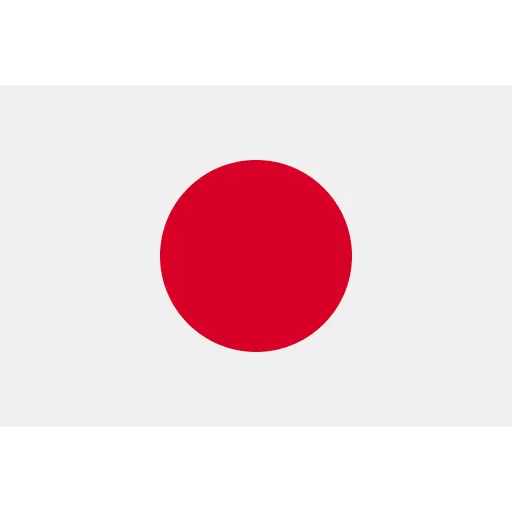The ultimate guide to Tokyo
Written by Merete - intern at Seramikku and former exchange student in Japan
Japan has always been very close to my heart and I fell head over heels for the Japanese capital Tōkyō (pronounced with two long o's) when I first visited. "Tōkyō" actually means eastern capital, and the city has not always been the Japanese capital. It was not until 1868, when Tōkyō had become the most populous city, that the Imperial City of Kyoto in the west was stripped of its title.
There is so much to see in the world's largest city with its almost 38 million inhabitants. people incl. suburbs on an area the size of Zealand. You can walk around the different areas of Tōkyō, but if you want to see more areas in one day, I recommend taking the train, bus or subway around. You can read more about the practicalities of Tōkyō airports and traveling around Japan in our previous post here . But let's get to the point and on to Tōkyō.
Top 3 areas in Tokyo
As I said, there is a lot to see, and in this presentation I will try to make an offer on three areas that I think belong to the ultimate guide to Tōkyō. At the end of this blog post I have added a few areas which are also worth seeing but did not get a place at the top. Enjoy!

(https://unsplash.com/photos/m1WyNFdIP3c)
1. Shinjuku
We start in the area characterized by skyscrapers and luxury hotels, Shinjuku, which is a hub for entertainment, transport and shopping, and funnily enough, Tōkyō Station with its underground passages is not as hectic. Start your tour of the Shinjuku area at the east exit of Shinjuku Station, where you can meet Godzilla at the Toho Cinema. In the large retail store Don Quijote close by, you can buy souvenirs with the big monster.
In the same area, you will find karaoke and bars at Tōkyō's red light district, Kabukichō , where there are a lot of nice photo spots to take pictures during the day. Here you can certainly also find a few "love hotels" with special teams where couples meet to be together. These hotels stand out from ordinary hotels with strange names and often creative and flamboyant exterior decoration.
Take a walk through the narrow, smoky streets of Omoide Yokocho , where you'll find small yakitori restaurants that seem dingy at first. But make no mistake, this is where you'll find scrumptious, authentic Japanese food. If you are looking for a unique dining experience, I have been told that it is something very special to drop by Robot Restaurant , where you can get food and a robot show for all the money. The price starts around ¥ 8,000, which corresponds to just under DKK 500. If you want to see more about the restaurant, there are tons of videos on YouTube with neon lights and amazed tourists.
In Shinjuku there is also the opportunity to see Tōkyō from above - completely free! At the Tōkyō Metropolitan Government Building Observatory in the western part of the district, you can get a beautiful view of the city in either the south or north tower. Take the elevator up to the 46th floor in 55 seconds. It tickles your stomach and fills your ears! One of the towers is open for entry every day between 9:30 and 23:00, so there is the opportunity to see the sunset, the beautiful lights over Tōkyō or the fine red tower, Tōkyō Tower . On a cloudless day you can still see Mt. Fuji in the distance, and if you can't see it, you can always look for the luxury hotel from the movie Lost in Translation . Afterwards you have the opportunity to enjoy live jazz music and French food in the restaurant or buy a postcard in the small souvenir shop.
Also, don't miss out on a trip to Korea-town, Shin-Okubo , if you're a fan of K-pop. In Shinjuku, it's also worth going past Shinjuku Gyōen park - especially in the spring, when the cherry trees burst out. Here you can hold your own hanami under the pink sakura , while enjoying a konbini snack and a Strong Zero. You can read more about our lovely konbini snacks in our post here .


(https://unsplash.com/photos/Z2Y_nM4KrUA + https://unsplash.com/photos/a5ToDH34m0I)
2. Shibuya and Harajuku
There is also the opportunity to see the beautiful blossoms of the cherry trees near Shibuya on the Nakameguro River. Shinbuya is one of the most popular and trendy areas in Tōkyō. It is one of the world's busiest train stations, which, in addition to being a busy, busy area, offers the famous Shibuya Crossing , known from films and series such as Fast and the Furious: Tokyo Drift. Here you will also come across the statue of the faithful dog Hachiko . Take a look in the Cat Street area or in the Shibuya 109 mall, where you might hear shop assistants shouting about sales or the classic store welcome, " irasshaimasee ". Maybe you'd rather take a ride in the Mario Cart go-carts as Princesse Peach? See it all from above at the popular Starbucks right at the big intersection.
If you want to experience Tōkyō's nightlife and Kabukichō is too much, Shibuya is the place to go. Maybe you can find an izakaya bar and have two hours of nomihōdai (all you can drink of drinks, beer and other alcohol) or rent a room for karaoke at Karaoke Kan. A little karaoke tip from me - if you come during the day, the price of a karaoke room is often a little cheaper than in the evening. There are also several hundred Michelin restaurants in the area.
If you're more hungry for fun after a good karaoke session, you can try one of the many themed cafes that can be found in the area for a limited time. Try to google your way to current cafes. You will find a list of themed cafes and restaurants in 2021 here . If you head west from Shibuya, you will come to the hip, bohemian district of Shimokitazawa , where you will find delicious second-hand finds, cozy bookstores and fantastic coffee.
Close to Shibuya is the Harajuku fashion district. Many tourists come to Harajuku to walk through the famous Takeshita Street, which is always full of tourists and young Japanese shopping. For decades, Harajuku has been a meeting place for style-experimenting young Japanese, who probably still meet on Sundays to walk the streets. Also try a delicious crepe with strawberries in one of the stalls such as SWEET BOX or take a trip to the large 100 yen store Daiso.
The avenue at Omotesandō is home to good thrift stores and expensive branded goods like in the expensive district of Ginza, but you will also find one of the world's most beautiful Starbucks at the top of the Tokyu Plaza Building and the fantastically beautiful mirrored entrance. If you go back towards Harajuku Station, you will find the beautiful Yoyogi park , and close to Harajuku Station there is an entrance to the beautiful Shintō shrine, Meiji Shrine . Here you may be lucky enough to witness a traditional Japanese wedding ceremony.


3. Ueno, Asakusa and Akihabara
A share central station and district is Ueno. Here you can easily have a day to walk by e.g. to take a walk in Ueno Park , where you will also find Ueno Zoo and the Tokyo Metropolitan Art Museum. Walk through the cozy street Ameyoko , where you will find stalls with street food and fun items. You must also not miss drinks and snacks at the izakaya bar The Lockup , which is also found in Ueno. While you're sitting in your cell drinking your drink with edible eyes, maybe a figure dressed in a suit will suddenly pass by... It's quite an experience and not for the faint of heart.
If you go east from Ueno Station (you can walk this way), you will come to the Asakusa area. Here you will find the large temple and tourist magnet Sensōji with the Nakamise shopping street that goes through the beautiful kaminarimon gate up towards the temple. Look in the cozy stalls with souvenirs and snacks on the way up to the temple, where you can, among other things, find ukiyoe prints, yukata (thin kimonos) and local specialties. Maybe you'll be lucky enough to come across a geisha or a costumed tourist. Many women use the surroundings to have pictures taken in rented kimonos with their hair up.
Get an overview of the beautiful area at the Asakusa Culture Tourist Information Center , where you can go up a few floors for free for quite a good view. If you want to go even higher, you can see Tōkyō from the top of the large Skytree . Here, prices can be up to ¥3,400 (approx. DKK 200) depending on the type of ticket. Also, see if you can spot beer company Asahi's office building and the golden flame, which looks like, well... something other than a flame (insert poop emoji yourself ).
Close to Sensōji are the old atmospheric theater streets, which are still festive to look at. You will also find Kappabashi street, where you can buy your own pottery, pans and cooking equipment from cozy stalls. There are also a few stalls selling plastic and wax food for display, which many Japanese restaurants have on display in their shops.
If you head south from Ueno Station instead, you'll come to Electric Town, Akihabara . Here you will find electronics stores for you to wander around. There are gadgets for everything, gacha machines, video games and anime/manga shops. If you're looking for retro games for old game consoles, you should take a look at Super Potato, which also has a small retro arcade section. There is something for every otaku (geek) here. Have a very special experience at a maid café, where you will be served food and drink by Japanese people dressed in French maid uniforms. Yes, it's just one of many special experiences to be had here in Tōkyō.


Other areas in Tokyo (if you have more time)
If you have a short time in Tōkyō, the must-see sights can be boiled down to the above places in the areas around Shinjuku, Shibuya and Ueno. All of these are on Japan Rail's green train line, the Yamanote Line, and are some major stations. In the following section, I'll mention a few other places that are worth seeing if you're in the capital for a longer period of time and want to read more about what else to see outside of the green circle in Tōkyō.
Experience the Toyosu Fish Market
Do you want to experience one of the world's largest fish markets in action? You have the opportunity to do that at the fish market in Toyosu . In 2018, the large indoor fish market at Tsukiji moved to new buildings in Toyosu. Here, tourists have the opportunity to observe negotiations and eat freshly caught fish in the restaurants. It is quite free to participate, but you pay with a night's sleep, because you have to get up early to be at the market around 5:30. Some in town the night before and do an all-nighter so they are sure to be able to get to Shijōmae Station and the market super early in the morning.
In the new buildings in the Fish Wholesale Market Building, there are observation windows so you can see how the big auctions for the giant tuna and other fish take place. Afterwards, you can buy both fish and vegetables in some of the other buildings close to the action.

(https://unsplash.com/photos/EHK-EH1SRzQ)
The modern port area of Odaiba
At the slightly more modern harbor area of Odaiba, which is an artificial island, there are also experiences to be had. I recommend taking the monorail from e.g. Asakusa Station. Here you can see the giant model of the robot Gundam (which was replaced a few years ago with a new Gundam statue) close to the beautiful Rainbow Bridge , which is lit up in the colors of the rainbow in the evening. Here, Tōkyō also has its very own Goddess of Liberty. Don't miss teamLAB Borderless Tokyo , a popular and immersive museum that is definitely on my bucket list for next time. There are also several museums, a Ferris wheel and hot springs, onsen , in the area.

(https://unsplash.com/photos/vW-rB_wSoSg)
The Disney parks
A little further away in another port area, Urayasu, are the Disney parks Disneyland and Disney Sea at Maihama Station. These parks have slightly different focuses, with Disneyland being the oldest and most traditional of the parks. Where this has a bit more focus on families with children, Disney Sea is more of a park for couples and adults. Here (in contrast to the first) they sell alcohol, and in my opinion the amusements are also a little wilder. If you only have one day, I can recommend a trip to Disney Sea, because with its water theme in the park, it is something very special. Come down to where "the sea is beautiful", visit the port of Agrabah or take a tour of the Tower of Terror. It is not unusual to see Japanese girls or couples in matching clothes in the parks here.

(https://unsplash.com/photos/RkY88X-Slfg)
Need to geek out?
Ikebukuro is another commercial area of Tōkyō with a busy train station on the central JR Yamanote line. Downstairs you will find a shopping area with everything from food to bookstores (this is very normal for the big stations). Like Akihabara, Ikebukuro is a center of otaku culture, and the Sunshine City shopping center is home to a Pokémon Center . When it's really busy and full of tourists, you have to expect queues inside and outside the store.
If you've already explored Akihabara, you'll find a similar area of otaku culture in Nakano Broadway , which is more marked by second-hand shopping. It is located a little further outside the center in a less hectic district. If you are a fan of Studio Ghibli and characters like Totoro, I can recommend a trip to the Ghibli Museum , located in the district of Kichijōji , where all Japanese people are said to live.

(https://unsplash.com/photos/_3upd3R2O7k)
Museums with art and history
If you're into art museums instead, you'll find the Mori Art Museum in Roppongi Hills with modern art exhibitions. If you are interested in history, I recommend the Fukagawa-Edo Museum , which offers the opportunity to learn about Tōkyō's history in a living way. At the Tokyo-Edo Museum, you can also see objects from Japan from before the birth of Christ up to the Japanese modernization around World War II. There is also a samurai museum, which I have not visited myself.

(https://unsplash.com/photos/X9yeaqT8ONE)
It was then my ultimate guide to Tōkyō. Are there sights or little nooks around the city that you think should be on the list of places you simply MUST see in the Japanese capital? Then leave a comment here. If you want tips for day trips outside Tōkyō , I've written a post about that too. See you or mata nee , as they say in Japan.
Also read: 5 cities you must visit in Japan .






